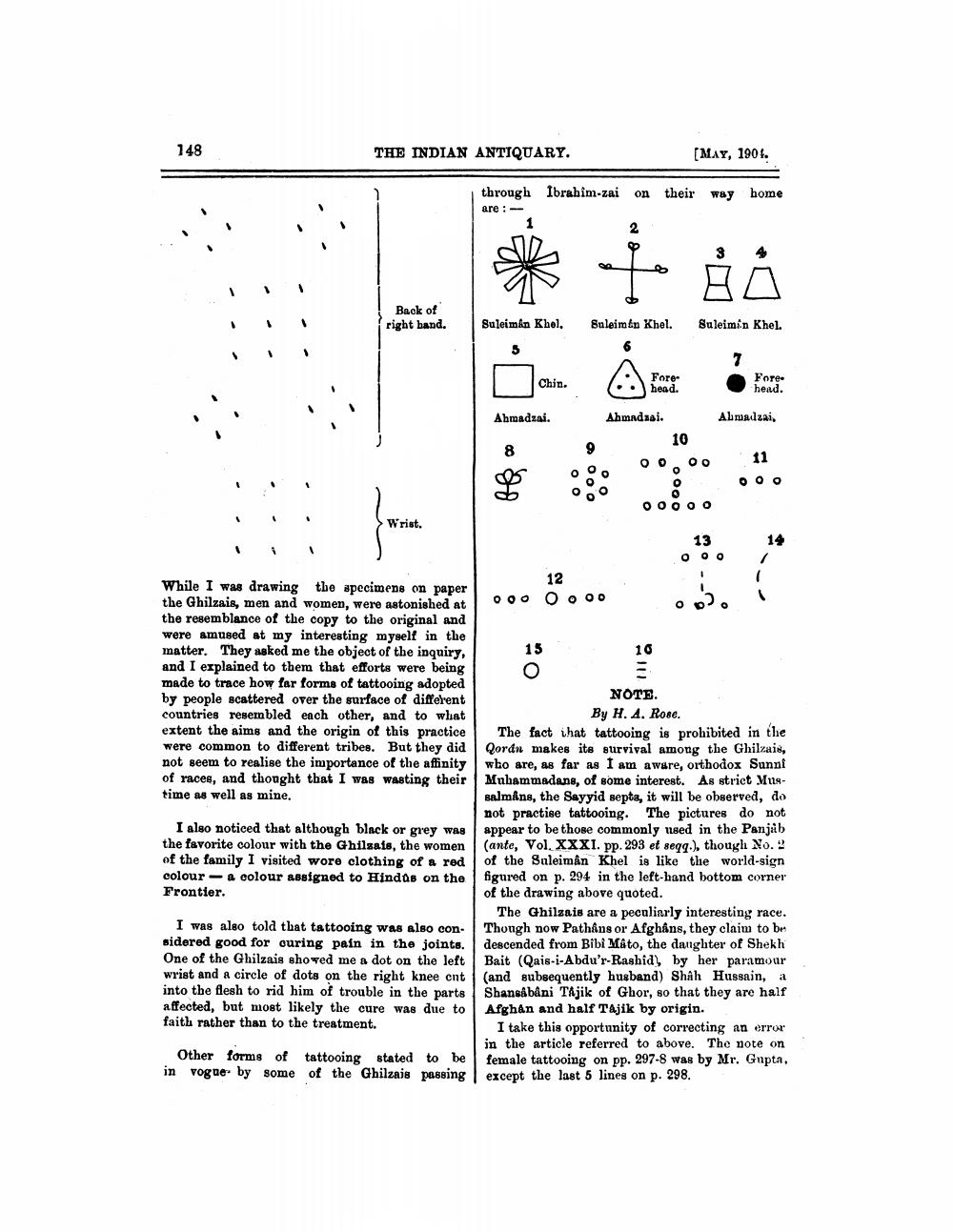________________
148
THE INDIAN ANTIQUARY.
(MAY, 1904.
through are :
Ibrahim-zai on their way home
*
#
D
Back of right band.
Suleiman Khel,
Suleimen Khel.
Suleiman Khel.
Chin.
Forehead.
Fore
head.
Ahmadzai.
Ahmadzai.
Almadzai,
10
> Wrist.
oo
12 While I was drawing the specimens on paper the Ghilzais, men and women, were astonished at
ооо оооо the resemblance of the copy to the original and were amused at my interesting myself in the matter. They asked me the object of the inquiry,
10 and I explained to them that efforts were being made to trace how far forms of tattooing adopted by people scattered over the surface of different
NOTE. countries resembled each other, and to what
By H. A. Rose. extent the aims and the origin of this practice The fact that tattooing is prohibited in tlie were common to different tribes. But they did Qordn makes its survival among the Ghilzais, not seem to realise the importance of the affinity who are, as far as I am aware, orthodox Sunni of races, and thought that I was wasting their Muhammadans, of some interest. As strict Mustime as well as mine.
salmans, the Sayyid septa, it will be observed, do
not practise tattooing. The pictures do not I also noticed that although black or grey was appear to be those commonly used in the Panjab the favorite colour with the Ghilsais, the women (ante, Vol. XXXI. pp. 293 et seqq.), though No.? of the family I visited wore clothing of a red of the Suleiman Khel is like the world-sign colour - a colour assigned to Hindus on the figured on p. 294 in the left-hand bottom corner Frontier.
of the drawing above quoted.
The Ghizais are a peculiarly interesting race. I was also told that tattooing was also con- Though now Pathåns or Afgháns, they claim to be sidered good for ouring pain in the joints. descended from Bibi Mato, the daughter of Shekh One of the Ghilzais showed me a dot on the left Bait (Qais-i-Abdu'r-Rashid), by her paramour wrist and a circle of dots on the right knee ent (and subsequently husband) Shah Hussain, a into the flesh to rid him of trouble in the parts Shansâbâni Tajik of Ghor, so that they are half affected, but most likely the cure was due to Afghan and half Tajik by origin. faith rather than to the treatment.
I take this opportunity of correcting an error
in the article referred to above. The note on Other forms of tattooing stated to be female tattooing on pp. 297-8 was by Mr. Gupta, in vogue by some of the Ghilzais passing I except the last 5 lines on p. 298.




